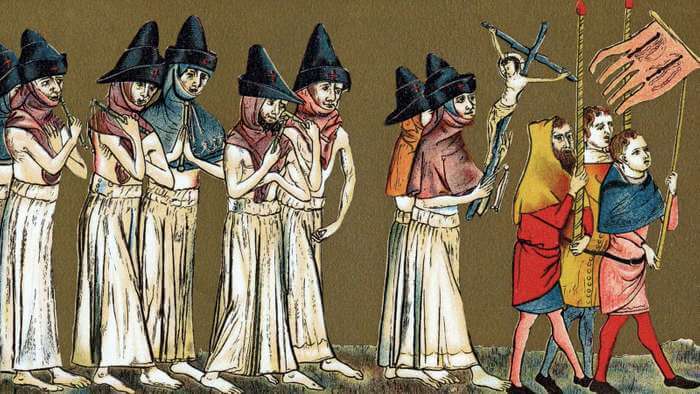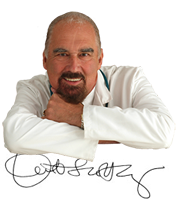In medieval times, people were fearful of many things they felt were dangerous: incubi, goblins, the pox, witches, the Devil. They had all sorts of whacky explanations for disease and why things happened. Malaria was caused by “bad air”, they believed (hence the name mal – aria). Today we know these theories and “models” of disease, if you like, are just plain silly.
Malaria is an infectious parasitic disease, caused by the parasite Plasmodium, which is transmitted by a bite form the Anopheles mosquito. The parasite lingers in the saliva of the mosquito. The mosquito got it from biting someone with malaria. It’s a simple chain: A to B to C to D.
The most terrifying disease of all time, without question, was The Plague aka. The Black Death. It wiped out over half the world’s population and no doubt, in some territories, more than that. It was long thought that The Plague did not reach sub-Saharan Africa. That’s just more crappy science; today they are finding the mass graves there with plentiful DNA proof.
In April 1348, the learned Catalonian physician Jacme d’Agramont wrote to address the “doubts and fears” rising around him. Rich and poor alike knew it was coming but had no idea what was to engulf them.
As d’Agramont wrote: The air was likely putrefied because of sin, he said, so confession should be the first priority. The windows should be sealed shut, the fire stoked with juniper, and the floor sprinkled with vinegar. One should eat and drink very little, and it should all be as sour as possible. “Slimy fishes” like eel and “rapacious fishes” like dolphin should absolutely not be eaten, nor ducks, nor suckling pigs. A little bloodletting could help. Sex and baths must be avoided, because they open one’s pores and allow noxious airs to enter.
About like today’s “pandemic” then, where you can make up your own rules as you go along for “protection”, and no protocol is too stupid!
Even self-flagellation (whipping) was prescribed by some Church leaders. Maybe we should be flogging those who won’t wear a mask! (do NOT write to me, I’m being ironic again).

Dutch flagellants, whipping themselves because they believed the Black Death was God’s wrath.
Most historians agree that the bacterium Pasteurella pestis was to blame (re-named, since I was at med school, as Yersinia pestis, after French bacteriologist Alexandre Yersin). It was certainly not sin!
But the superstitious nonsense is still with us. We have people who don’t believe pathogens are important: it’s all about terrain, not microbes. Why? Because Antoine Béchamp said so! To read the silly, and in many cases vituperate, blogs all over the internet (all copying each other) you’d think microbes had nothing to do with disease.
Béchamp must have been right, because he was reviled in his day (that’s the only credential required for many foolish, non-scientifically trained people). Whereas Louis Pasteur was beloved by the Establishment of the day, so he must have been a crook. That’s also the standard narrative of cranks today. If you can get yourself attacked by the CDC or FDA, you must be onto something worthwhile!
Elvis Presley Stole My Songs!
Forget the baloney that Pasteur said on this deathbed that “Béchamp was right, it is the terrain, after all.” This whimsy is repeated on tens of thousands of websites and they are all WRONG. Pasteur suffered a major stroke and was unable to speak for the final part of his life. Not that this discrepancy bothers the cranks. They have their ideas and no mere facts will shift them!
The true hero was, and always will be, Louis Pasteur. He was a medical and scientific genius.
It is true that a person in poor shape will more likely fall victim to an infection. But you still need the microbe to get the disease. You won’t develop TB, for instance, without the tubercle bacillus in your system.
This is called the “germ theory of disease”. It was developed by Pasteur—who, it must be remembered, saved both the French silk industry and the wine industry from destruction. Moreover, he developed the rabies vaccine, a great blessing on Mankind. Studies indicate that if the vaccine is given immediately to someone who was bitten by a rabid animal, it is 100 percent effective. Otherwise hydrophobia is an utterly HORRIBLE way to die.
Antoine Béchamp then claimed the authorship of these discoveries. It’s all, to me, a bit like “Elvis Presley stole my songs…” This is an absurd claim made by lesser musicians, that they were there first and someone took their intellectual idea. Boring!
In this “fight of the century”, Pasteur won by a knockout, says Le Republic Lorrain!1
It’s probably no more than a case of synchronicity: you know, someone, somewhere comes up with an idea and suddenly lots of others discover the same thing at about the same time. It’s about the morphic resonance field, not plagiarism!
Béchamp did, however, come up with something extraordinary for the day. He claimed that bacteria do NOT always maintain the same form, but can shift; a phenomenon called pleomorphism. He called these smaller forms microzymas. Royal Raymond Rife identified these unusual forms under his super-microscope.
Koch’s Neating Up
The final icing on the scientific cake, as to where disease really comes from, was in the work of Robert Koch, German physician and microbiologist (1843 – 1910). He is famous for his four postulates, which rightly won him the Nobel Prize in Physiology of Medicine in 1905.

Heinrich Hermann Robert Koch, one of medicine’s greats
Koch’s Postulates2
- The organism must always be present, in every case of the disease.
- The organism must be isolated from a host containing the disease and grown in pure culture.
- Samples of the organism taken from pure culture must cause the same disease when inoculated into a healthy, susceptible animal in the laboratory.
- The organism must be isolated from the inoculated animal and must be identified as the same original organism first isolated from the originally diseased host.
That’s a tough and incontrovertible array of tests. However, even they are not perfect: the leprosy microbe, for example (Mycobacterium leprae), cannot be grown in pure culture.
And Béchamp’s microzymas effectively violate these postulates too.
Note incidentally, Koch’s wording says “…injected into a susceptible organism.” That takes care of the “terrain” part anyway, which no-one is arguing about. In any group of individuals, only certain of the members will succumb to the disease: those who are immune compromised, stressed or in a state of poor nutrition or overload.
As I have said often: those Victorian dramatic novelists, like Dickens, Dostoevsky and Hugo, were not wrong. The common causes of “consumption” (another name for TB) was poor nutrition (poverty) and being plighted in love (stress, loss, despair). Usually both!
Yes, the terrain is critical. But the microbe is essential!
To your good health,

Prof. Keith Scott-Mumby
Playing historian this week! I please do not write to me to tell me of the scurrilous nonsense being spread by self-serving Dr. Gerald L. Geison of Princeton University, in his book “The Private Science of Louis Pasteur.”
References:
2. https://en.wikipedia.org/wiki/Koch%27s_postulates
